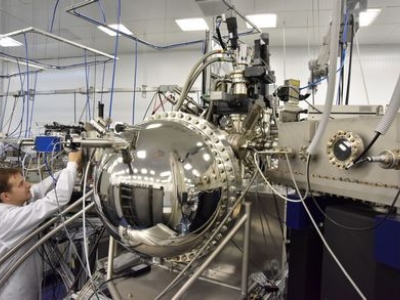The synchrotron helped scientists to discern the amazing properties of new hard magnetic materials

The research on specialized source of synchrotron radiation "KISI-Kurchatov" helped scientists to determine the new properties of magnetically hard nanoparticles based on strontium hexaferrite when coated with silicon. The new material turned out to be promising for use in the targeted delivery of drugs that effectively bind to the silicon surface. The study was conducted jointly with Lomonosov Moscow State University and published in the Advanced PowderTechnology journal.
The magnetism of materials is a phenomenon that occurs due to the presence of a magnetic moment in electrons - the spin. Materials possessing magnetism can be divided into two classes - soft magnetic and hard magnetic. The first ones easily change the direction of the spins, which atoms are composed, while the second, on the contrary, retain their magnetization even near very strong magnets. Thus, hard magnetic materials based on strontium hexaferrite are widely used in the manufacture of permanent magnets of compact electric motors and magnetic data carriers.
Surface modification of magnetic materials is an important step in the development of their further practical application. In a new study, scientists decided to coat magnetically hard nanoparticles based on strontium hexaferrite with silicon.
Stable aqueous colloidal solutions based on strontium hexaferrite nanoparticles were used as the starting material. Colloidal particles were plates with a diameter of 40 nm and a thickness of 5 nm. Then, the scientists coated the starting material with silicon dioxide.
Finally, specialists studied the morphology and magnetic properties of the materials obtained. X-ray photoelectron spectra of the samples were obtained at ESCA module NanoFES "KISI-Kurchatov".
“We analyzed magnetically solid nanoparticles by photoelectron spectroscopy and proved the success of their synthesis, as well as silicon coating technology, which significantly expands the scope of their use, including for biological use,” said one of the authors, research engineer at specialized source of synchrotron radiation "KISI-Kurchatov" Ratibor Chumakov.
Silicon-coated magnetic particles are promising for use in targeted drug delivery because they are readily bound to the silicon surface. In this case, the drug will be delivered to a specific place in the body without mechanical intervention through the use of an external magnetic field.
Source (in Russian): http://www.nrcki.ru/






